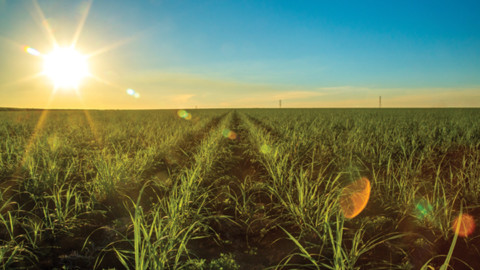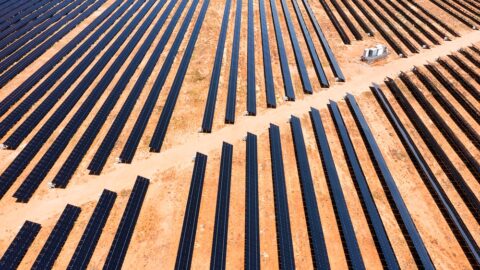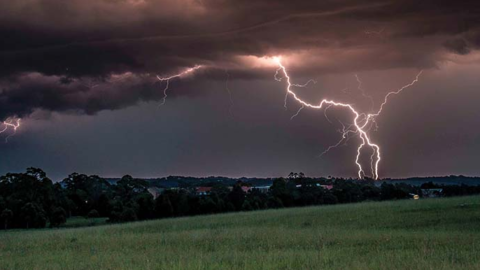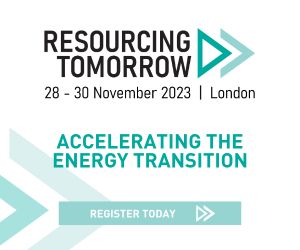Australia has unmatched renewable energy sources and is well placed to meet the growing demand for secure and affordable energy. But as the generation mix continues to evolve over the coming decades, significant investment in a range of storage options will be required. CSIRO recently released the Renewable Energy Storage Roadmap, which represents a milestone in identifying the diverse portfolio of storage solutions needed to support Australia’s energy transition.
The comprehensive report examines the role of storage for seven Australian sectors, highlighting specific challenges, technology options, and scale-up recommendations.
Bolstering Australia’s net zero ambitions
As Australia moves towards a net zero emissions future, the energy sector is evolving rapidly. The share of variable renewable energy (VRE) in the grid is increasing – mainly in the form of wind and solar photovoltaic.
At the same time, demand for electricity is growing rapidly, as transport and building sectors become electrified. Roadmap modelling indicates that we could require ten to 14 times more energy storage capacity in the National Electricity Market by 2050.
The challenge we face is how to navigate the transition and move to a decarbonised society, while maintaining an energy supply that is affordable and reliable. CSIRO Chief Executive, Dr Larry Marshall, noted new technologies would be needed to increase penetration of renewables and stabilise the grid while we build utility scale storage capacity.
“Over the long term, storage will accelerate the integration of renewables, enhancing grid stability and reliability, and supporting decarbonisation of industries,” Dr Marshall said.
“All pathways to net zero share one thing in common: a massive increase in storage capacity.”
CSIRO’s Renewable Energy Storage Roadmap builds on prior publications and scenarios to examine the role of traditional storage technologies, such as batteries and pumped hydro. Meeting Australia’s future energy needs is a complex challenge that cannot be solved with a single storage technology.
All forms of energy storage must be on the table for consideration, including mature technologies such as batteries and pumped hydro and emerging technologies such as hydrogen and thermal energy storage.
Tackling sector-specific challenges
CSIRO’s approach to research is a collaborative one, and the Renewable Energy Storage Roadmap was developed in consultation with more than 50 government, industry and research organisations. Australian Renewable Energy Agency (ARENA), CEO, Darren Miller, welcomed the Roadmap, highlighting the critical need to increase the level of energy storage across the system.
“ARENA has invested more than $500 million across batteries and storage technologies, playing a major role in increasing the options available to meet Australia’s medium and long term storage needs by supporting a range of emerging technologies,” Mr Miller said.
BHP, Head of Sustainability Innovation, Ingrid Oyarzun, said BHP was proud to be part of CSIRO’s Renewable Energy Storage Roadmap.
“We recognise our role in collaborating with researchers and governments to achieve progress in managing the challenges of climate change,” Ms Oyarzun said. GHD Future Energy Leader – Australia, Malcolm Rushin, said GHD was pleased to support the Roadmap as they had long recognised the pivotal role of energy storage in accelerating Australia’s energy transition and the scale of investment required.
“The Renewable Energy Storage Roadmap outlines some emerging technologies which offer the potential for lower cost storage, which is the missing piece in the reliable power supply puzzle,” Mr Rushin said. The Roadmap reveals a range of significant sector-specific complexities that need to be addressed.
Despite widespread consensus that increased storage can support the decarbonisation of a range of industrial processes, sectors face diverse challenges in integrating renewable storage technologies. These challenges are compounded by a lack of commercially mature storage options, uncertainties around future infrastructure and rising technology costs. Sectors that are explored within the Roadmap include:
- Major grids
- Large-scale, isolated grids: remote mining
- Isolated microgrids: remote communities
- Mid-temperature industrial processes: manufacturing
- High-temperature industrial processes: alumina refining
- New energy exports: hydrogen
- Transport: heavy-duty hydrogen vehicles
The report analyses technology selection and deployment considerations for each sector and examines technology options for specific applications. Analysis is supported by case studies and levelised cost of storage (LCOS) calculations where possible.
Supporting complex decision making
Australia is a world leader in solar energy, and we benefit from a wide range of existing storage technology options. Each of these has different strengths and weaknesses, and levels of maturity. We’re now in the exciting position where many developing technologies are on the cusp of commercial viability.
However, the range of end use applications for storage technologies in Australia is enormously varied: not just at sector level, but regionally and even across individual sites. CSIRO Energy Director, Dr Dietmar Tourbier, said the Roadmap is a major step towards pinpointing fit-for-purpose solutions for energy storage.
“For example, batteries may be the best option for local and short duration storage of electricity. While thermal or heat energy (like steam) might be technology better suited for heat intensive industries,” Dr Tourbier said.
“Co-investment is required across the system to accelerate technology commercialisation and scale up across a diverse portfolio of energy storage technologies.” That means the decisions about how and where to invest are enormously complex. Site and regional factors can affect the requirements, costs, risks and integration considerations for any given storage system.
Investing in a pipeline of projects
The urgent message that can be drawn from the Roadmap is the pressing need for investment of scale across a wide range of renewable energy storage technologies. To accelerate commercialisation and scale up technologies at the required pace, it’s essential that we see collaboration and co-investment from government, industry and research institutions.
“There is no silver bullet for reaching net zero so we need multiple shots on goal, like from renewables, batteries, hydrogen, thermal storage, sustainable aviation fuels, and a host of new science-driven technologies,” Dr Marshall said.
“Reaching net zero is a wicked challenge, we need a robust pipeline of projects that use diverse technologies supported by industry, government and community stakeholders.”
As Australia’s national science agency, CSIRO is ideally placed to support those efforts with reliable, actionable, energy storage research. We’ve been at the forefront of energy storage research for more than 20 years, making strides in battery technology, ultracapacitors, hydrogen and renewable liquid fuels.
CSIRO’s Renewable Energy Storage Roadmap is a robust, evidence-based examination of both the current situation with energy storage in Australia and potential pathways forward. Released ahead of the launch of CSIRO’s Renewable Energy Powerhouse Mission, it provides an important focus point for shared understanding and informed discussion, and will equip Government and industry stakeholders with the tools and knowledge to target investments, implement policies and adopt new technologies.
This sponsored editorial was brought to you by CSIRO. For more information visit: https://www.csiro.au/en/work-with-us/services/consultancy-strategic-advice-services/csiro-futures/energy-and-resources/renewable-energy-storage-roadmap


















